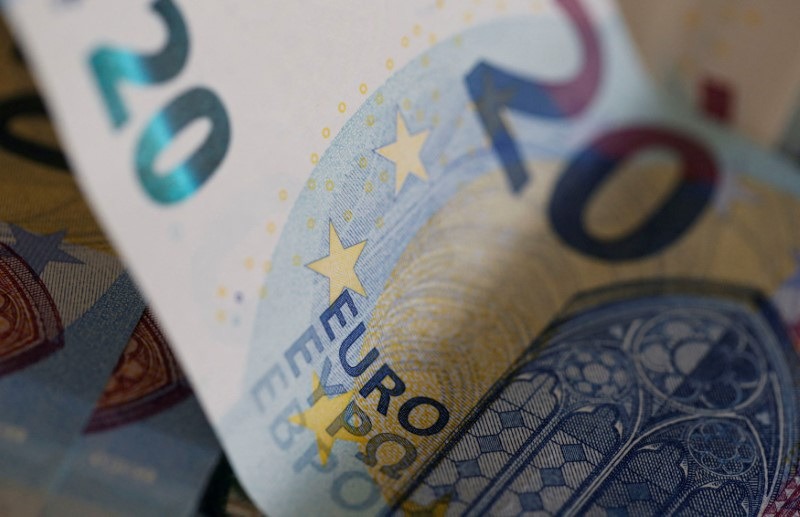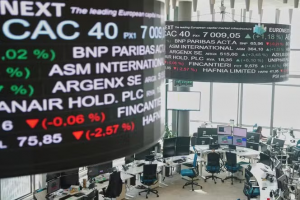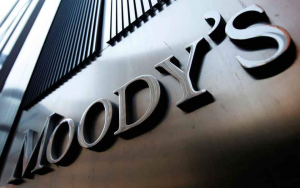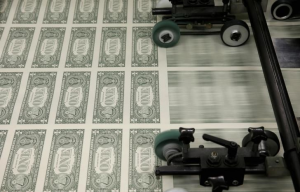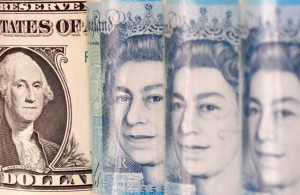The euro weakened slightly against the dollar on Monday, as investors kept an eye on developments in potential Ukraine peace talks and gauged the impact of Trump administration tariff threats.
U.S. and Russian officials are due to meet in Saudi Arabia this week to discuss possible negotiations on Ukraine peace deal.
Media reports have suggested that the high-level in-person talks -- the first of this kind between U.S. and Russian officials in years -- could be a precursor to a possible face-to-face meeting between Trump and Russian counterpart Vladimir Putin.
Ukrainian President Volodymyr Zelenskiy has noted that Kyiv was not invited to the talks in Saudi Arabia, while Ukraine's European allies have voiced concerns that they may be frozen out of the negotiations. French President Emmanuel Macron is due to hold an emergency informal summit of European leaders in Paris on Ukraine.
Elsewhere, the threat of an imminent hit to European businesses from sweeping reciprocal tariffs by U.S. President Donald Trump showed signs of fading, with the next major development in the trade spat between the White House and the EU not expected to come until April. Still, concerns remain that the duties may respond to value added taxes in countries around the world.
Stocks in Europe surged up to almost record levels, buoyed in particular by defense stocks viewed as beneficiaries of renewed spending by European countries to address security concerns. The prospect of increased expenditures also fueled an uptick in bond yields across Europe.
The euro edged down by 0.1% against the U.S. dollar to $1.0472 by 07:52 ET (12:52 GMT).
Asia FX subdued
Most Asian currencies eased on Monday amid worries over Trump's tariffs, while the Japanese yen strengthened with data showing faster-than-expected economic growth in the fourth quarter.
Japan's economy expanded at an annualized rate of 2.8% in the fourth quarter of 2024, significantly surpassing market expectations of a 1.0% increase, according to gross domestic product (GDP) data released on Monday.
This growth was driven by robust exports and moderate private consumption. On a quarterly basis, the economy grew by 0.7%, exceeding the anticipated 0.3% rise.
The Japanese yen rose against the U.S. dollar, with the USD/JPY pair falling 0.4% as of 03:48 GMT.
“The Japanese economy continues to grow, faster than the Bank of Japan's forecast. Given the upside risks to higher inflation, the BoJ is likely to raise rates as early as May if the Shunto wage negotation results are as strong as last year,” ING analysts said in a recent note.
Other regional currencies were under pressure in anticipation of fresh U.S. tariffs. Emerging Asian economies, which have seen their export shares to the U.S. rise in recent years, are particularly vulnerable to an escalating trade war.
The interconnectedness of these economies with both the U.S. and China means that increased tariffs could disrupt trade flows, leading to depreciation in regional currencies.
The Chinese yuan’s onshore pair USD/CNY was largely unchanged, while the offshore pair USD/CNH inched 0.1% lower.
Elsewhere, the Indonesian rupiah’s USD/IDR pair rose 0.3%, while the Indian rupee’s USD/INR pair was muted. The Malaysian ringgit’s USD/MYR pair rose 0.2%, while the Philippine peso’s USD/PHP climbed 0.4%.
=“Asian FX has held up quite well this year, with only modest losses for Indonesia, India and the Philippines. However, it's still too early to call the 'all-clear' on trade and the bloc can easily come under renewed pressure,” ING analysts wrote
The Australian dollar’s AUD/USD pair gained 0.3%, while the Singapore dollar’s USD/SGD pair was largely unchanged. The South Korean won’s USD/KRW pair edged up 0.1%.
In the Asia-Pacific region, monetary policy decisions in Australia and New Zealand will be in focus this week.

